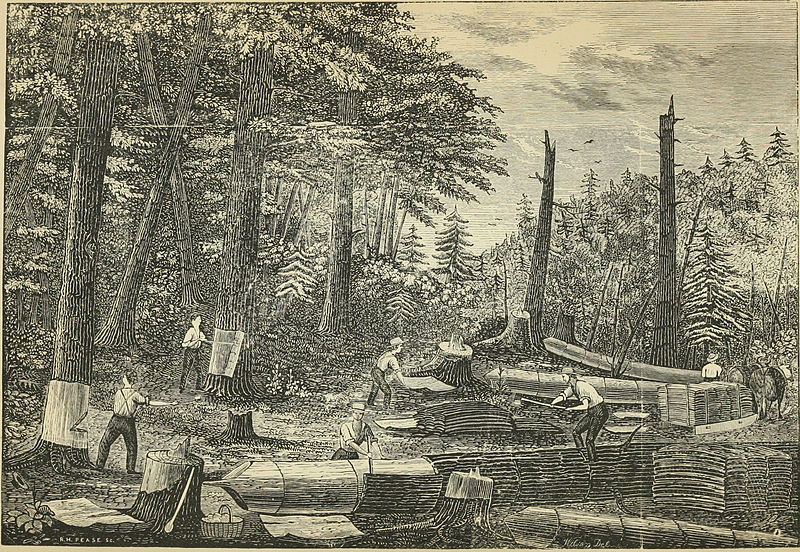Eastern Hemlock : What do humans use it for?
Humans use eastern hemlock primarily for lumber and paper pulp. Lumber from the eastern hemlock has relatively low economic value, but is still used occasionally for roofing, boxes, and crates. The paper pulp produced is often darker than pulp made from spruces, so it’s more difficult to bleach and not used for high-grade papers but instead for things like wrapping paper and newspaper.
Historically, eastern hemlocks were used extensively for tanning leather, which was a crucial part of life in early America. After the animal hide is cleaned and soaked in lime, it then is soaked in vats of tannic acid made from plant tannis. Hemlock trees were popular to use for their tannis because they contained a high concentration of it—up to 12%. Tannis binds together collagen proteins in hides, making it more resistant to decomposition. Hide stays up to six months in hemlock bark solution and comes out with a beautiful reddish-brown color. Due to how useful the eastern hemlock was to settlers, it is estimated that over a 20-year span in the late 1800’s Pratt Tannery in Massachusetts used 400,000 hemlock trees alone. Not only were tanneries destructive to the hemlocks, but also the streams and rivers they were built by became heavily polluted. The hemlock bark-tanning industry was largely finished by the end of the 20th century; more efficient methods for tanning were discovered. The eastern hemlock made an impressive recovery after the destruction, and has regrown to cover the hillsides of New England once again.
Eastern hemlock is also a valued ornamental plant; it can be trimmed into attractive hedges and is very shade tolerant. Its finely textured needles make it appear full and healthy all year round, so it is an attractive plant for gardens and yards.
Medicinally, the eastern hemlock can be used in several different ways. Native American tribes of the Northeast would boil the bark of the eastern hemlock and make a paste they would put on wounds to help them heal faster, which worked because of its astringent properties. Tea can be made from the twigs and needles, which is high in vitamin C and said to help cure kidney problems. Because of the high vitamin C content, the bark is occasionally used to cure scurvy. Historically, the cambium of the tree was used as a base for breads and soups. Sometimes it was even mixed with animal fat and dried fruit to make food high in nutrition.

